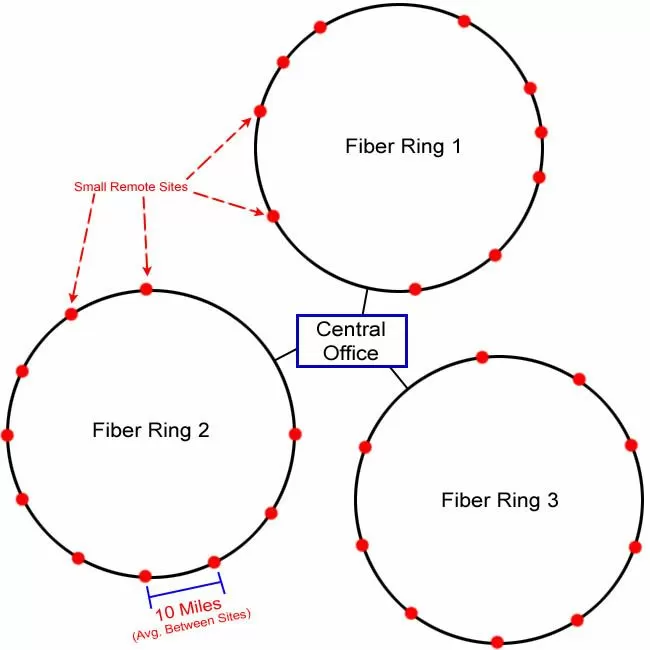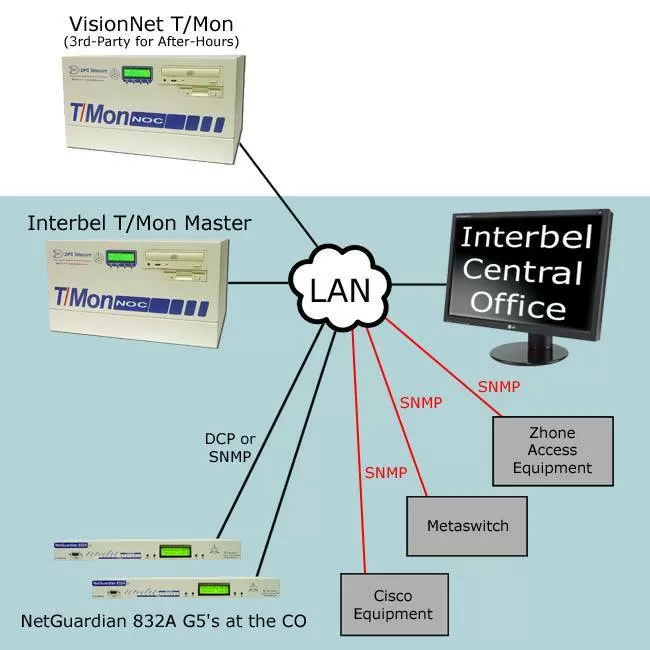A high-quality building access system will enhance the security of your sites.
This guide to will show you how to ensure the safety of your revenue-generating equipment.
1-800-693-0351
Have a specific question? Ask our team of expert engineers and get a specific answer!
Sign up for the next DPS Factory Training!

Whether you're new to our equipment or you've used it for years, DPS factory training is the best way to get more from your monitoring.
Reserve Your Seat TodayBased in northwestern Montana, Interbel Telephone has about 3500 access lines, 3 fiber rings, 1 central office, and about 30 remote sites.
In an earlier case study, you heard from Central Office Supervisor Marty Sosa, who discussed the alarm monitoring implications of Interbel's recent infrastructure upgrade. After upgrading from a Lucent 5ESS switch to a Metaswitch, they needed to replace the embedded monitoring on their decommissioned 5ESS. After researching their options, Interbel deployed multiple NetGuardian remotes and a T/Mon master station.
Today, you'll hear from Scott Miller, Manager of Network Operations, and Jared Sherwood, Central Office Technician. They'll discuss Interbel's network, the role of their T/Mon master and NetGuardian RTUs, and their future vision for electronic building access control.

Overview of Interbel Telephone's network structure
"Our network has rings that interlock in the middle at the CO," Miller said. "Each building on the rings is separated by about 10 miles."

"It would be a good idea to put a NetGuardian at the warehouse. It could look at the generator when the generator runs. We'd know when the power fails and when the doors open and close."
"Both NetGuardians are in the central office," he continued. "It just happens to be that the customers we serve out of the CO are on this piece of equipment on this ring. This is the off-ramp for all 3 rings, and it connects to the Metaswitch & our Cisco equipment for network access."
The T/Mon master and NetGuardian RTUs monitor and report alarms
"Our 2 NetGuardians are installed at the CO," Miller said. "It would be a good idea to put a NetGuardian at the warehouse to look at other stuff, too," Miller says. "It could look at the generator when the generator runs. We'd know when the power fails and when the doors open and close."
"We're definitely going to be using the SNMP on T/Mon, because that's how we're going to be bringing back the Zhone alarms, the Metaswitch alarms, and the Cisco alarms."
Other common alarms monitored at Interbel's sites include environmental alarms, smoke alarms, and fuse alarms.
Interbel purchased their T/Mon NOC master to collect alarms from NetGuardian remotes, as well as SNMP-native equipment.
"We're definitely going to be using the SNMP on T/Mon, because that's how we're going to be bringing back the Zhone alarms, the Metaswitch alarms, and the Cisco alarms," Sherwood said. "That will all come back to the T/Mon in one alarm window."

Future plans for electronic building access control
Miller and Sherwood also discussed their vision for deployment of the DPS Building Access System, which leverages an existing deployment of monitoring equipment to efficiently support electronic door control.
"We're looking to keep the T/Mon at the CO to control doors via IP," Miller explained. "We have Ethernet at every site. We can put the Building Access System on any vLAN we want to. There's a little switch at each site. You just plug it in and there you go."
"We have 29 sites with 1 door each, 10 doors at the warehouse, 2 at main office, and 4 at CO," Miller said. "That gives us a total of 45 doors to electronically control."
Sherwood would like to implement Stay Open Mode at sites that are "open for business" at specific times. Using this mode, a special key would be configured to unlock the door when swiped in the morning, then lock the door again when swiped in the evening. If the door remains unlocked beyond a specified time, an automatic alarm can be created. After hours, individual users could enter using their own keys, if they had permission in the Building Access System database.
"We'd like to set up a certain time, say 8:00am to 5:00pm, where the door is just unlocked," Sherwood said. "It would be good to have that at the main office."
Sherwood and Miller are also considering the possibility of monitoring their storage yard with the Building Access System.
"We have a large storage yard," Miller said. "We store spools of coax and conduit, copper, fiber, other equipment, and other vehicles."
Maintaining security at the storage yard with traditional locks and keys is proving to be a chore. Every visit to the yard involves significant, repetitive locking and unlocking.
"Getting something out of there means driving up to the gate, getting out, unlocking the gate, doing what you need to do, driving out, stopping, locking the gate, and driving away," Miller explains.
Electronic building access at the storage yard gate would reduce the hassle of entering and leaving, while offering better protection for the valuable inventory there. No one can forget to lock a gate that is electronically controlled, and you can't duplicate proximity keycards at your local hardware store.
"I'm going to discuss the upgrade to the T/Mon LNX within Interbel. I like the Web 2.0 interface and the forward-looking, moving-forward feel of that platform."
The future for T/Mon at Interbel
Miller also shared his thoughts on T/Mon LNX, the successor to the T/Mon NOC platform.
"I'm going to discuss the upgrade to the T/Mon LNX within Interbel," Miller said. "I like the Web 2.0 interface and the forward-looking, moving-forward feel of that platform."
Other Case Stories, Client Reviews and BAS White Paper
Building Access White Paper